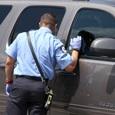Today is National
Heatstroke Prevention Day! Sadly
there have been 24 deaths so far in the US this year--we are ahead of
last year at this time! Today our
partners in safety, Safe
Kids, will be posting on Facebook and tweet every hour on the hour from 10
a.m. to 5 p.m. various safety messages. Safe
Kids will be using the hash tag #heatstroke on all its social media posts and
asks you to do the same. We will be
tweeting as well on our Twitter feed @mcfrs.
Below, please find some helpful tips from SafeKids as well
as a video highlighting the danger.
Please spread the word! BD
• July 31 is “National Heatstroke Prevention Day,” a day-long
social media campaign created to raise awareness about the dangers of leaving
children alone in hot cars.
• So far in 2013 there have been at least 24 deaths of children
unattended in vehicles.
• These tragedies happened in 15 different states from Texas and
Florida to Idaho and Minnesota.
• They happened in temperatures as hot as 100 degrees and as mild
as 76 degrees.
• Safe Kids is working with NHTSA and the GM Foundation to ask all
our partners to help us raise awareness about the dangers of leaving children
alone in cars.
 |
| From SafeKids.org |
• Safe Kids is going to post on Facebook and tweet every hour on
the hour from 10 a.m. to 5 p.m. Safe Kids will be using the hash tag
#heatstroke on all its social media posts and asks you to do the same. Our
twitter handle is @safekidsusa if you want to retweet.
• We’re asking everyone to get involved by using your social media
outlets and posting as many times as you can throughout the day to keep the
conversation going.
• We have sample posts and tweets for you at Safekids.org.
The Issue
• Heatstroke is the leading cause of non-crash, vehicle-related
deaths for children.
• It occurs when the body isn’t able to cool itself quickly enough
and the body temperature rises to dangerous levels.
• Young children are particularly at risk as their body heats up
three to five times faster than an adult’s.
• When a child’s internal temperature gets to 104 degrees, major
organs begin to shut down. And when that child’s temperature reaches 107
degrees, the child can die.
• Because of this, and because cars heat up so quickly – 19
degrees in 10 minutes – tragedies can happen faster than you think.
• Symptoms can quickly progress from flushed, dry skin and
vomiting to seizures, organ failure and death.
Key Stats
• Since 1998, at least 585 children across the United States have
died from heatstroke when unattended in a vehicle.
• That’s one child every 10 days.
• Happens in three ways:
•52% - child
“forgotten" by caregiver
•29% - child
playing in unattended vehicle
•18% - child
intentionally left in vehicle by adult
• In 2010, 49 children died from heatstroke. In 2012, one of the
hottest years on record, 33 children died.
• Heatstroke deaths have been recorded in 11 months of the year in
nearly all 50 states.
Top Safety Tips
• Heatstroke can
happen anytime. Anywhere.
o And it’s also
completely preventable.
• We don’t want to
see this happen to any family.
Safe Kids is working with great partners like NHTSA and the GM Foundation to remind parents and caregivers to ACT.
A: Avoid heatstroke-related injury and death by never leaving your child alone in a car, not even for a minute. And make sure to keep your car locked when you’re not in it so kids don’t get in on their own.
C: Create reminders by putting something in the back of your car
next to your child such as a briefcase, a purse or a cell phone that is needed
at your final destination. This is especially important if you’re not following
your normal routine.
T: Take action. If you see a child alone in a car, call 911.
Emergency personnel want you to call. They are trained to respond to these
situations. One call could save a life.






























